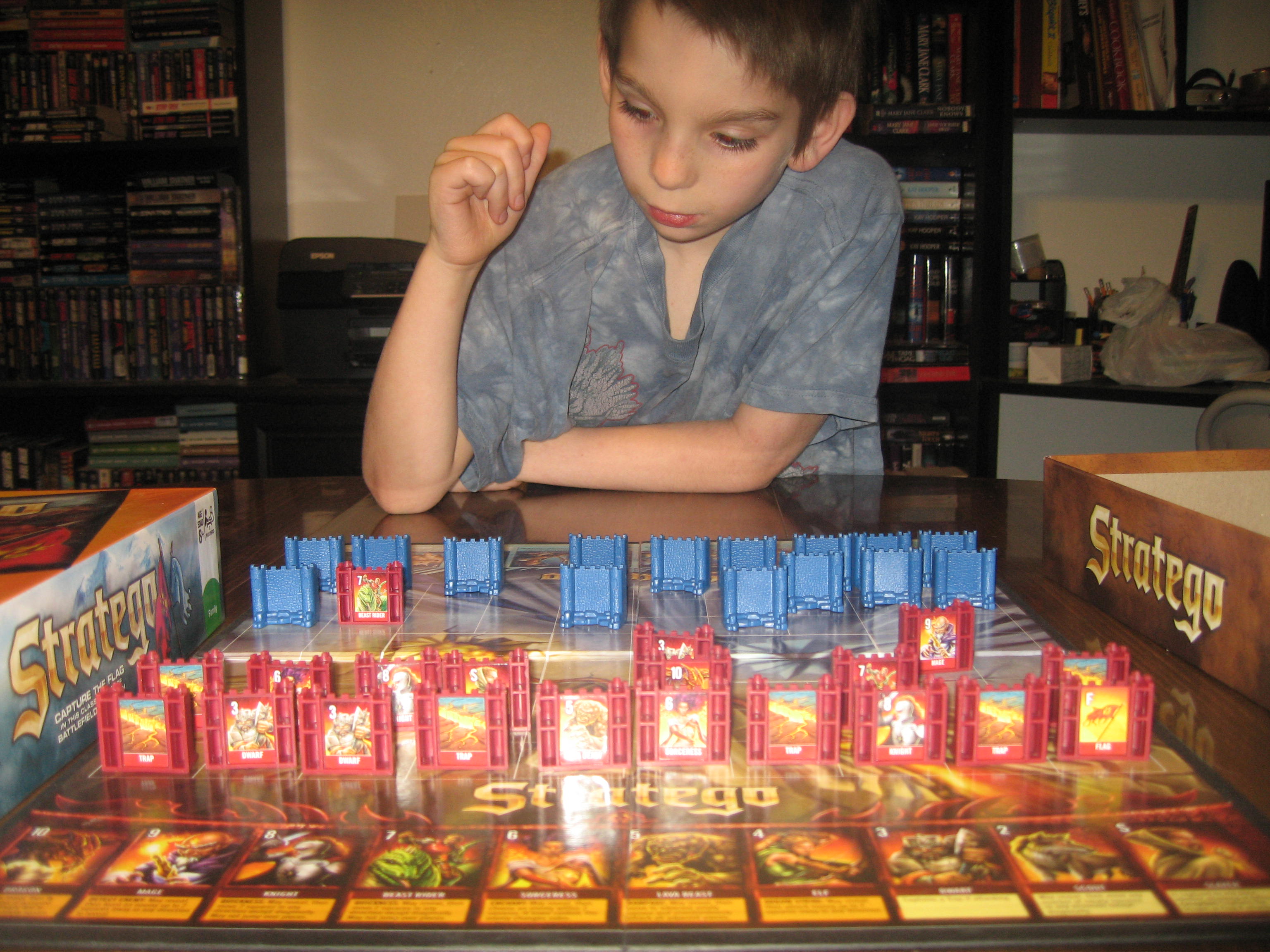

More recent American versions of the game, which adopted the European system, caused considerable complaint among American players who grew up in the 1960s and 1970s. The international Stratego scene has, more recently, been dominated by players from the Netherlands.Įuropean versions of the game give the Marshal the highest number (10), while the initial American versions give the Marshal the lowest number (1) to show the highest value (i.e.

The game is particularly popular in the Netherlands, Germany, and Belgium, where regular world and national championships are organized.
:max_bytes(150000):strip_icc()/3325369301_b945ba31c6_o-58a6fa9f5f9b58a3c91b5560.jpg)

American variants later introduced new rectangular pieces with a more stable base and colorful stickers, not images directly imprinted on the plastic. European versions introduced cylindrical castle-shaped pieces that proved to be popular. This, of course, was disastrous for that player, since it often immediately revealed the piece's rank, as well as unleashing a literal domino effect by having a falling piece knock over other pieces. The wooden pieces had none, often resulting in pieces tipping over. The change from wood to plastic was made for economical reasons, as was the case with many products during that period, but with Stratego the change also served a structural function: Unlike the wooden pieces, the plastic pieces were designed with a small base. Starting in the late 1960s all versions switched to plastic pieces. The game was licensed by the Milton Bradley Company for American distribution, and introduced in the United States in 1961 (although it was trademarked in 1960). After World War II, paintedwood pieces became standard. Pieces were originally made of printed cardboard. The modern game of Stratego, with its Napoleonic imagery, was originally manufactured in the Netherlands by Jumbo. It featured standing cardboard rectangular pieces, color printed with soldiers who wore contemporary (to 1900) uniforms, not Napoleonic uniforms. The rules of L'attaque were basically the same as the game we know as Stratego. In its present form Stratego appeared in Europe before World War I as a game called L'attaque. Thierry Depaulis notes that the 1910 version divided the armies into red and blue colors. An expanded version of the Land Battle Chess game also exists, adding naval and aircraft pieces and is known as Sea-Land-Air Battle Chess (Hai Lu Kong Zhan Qi). A third player is also typically used as a neutral referee to decide battles between pieces without revealing their identities. The major differences between the two games is that in Jungle, the pieces are not hidden from the opponent, and the initial setup is fixed.Ī modern, more elaborate, Chinese game known as Land Battle Chess (Lu Zhan Qi) or Army Chess (Lu Zhan Jun Qi) is a descendant of Jungle, and a cousin of Stratego: the initial setup is not fixed, both players keep their pieces hidden from their opponent, and the objective is to capture the enemy's flag. Lu Zhan Jun Qi's basic gameplay is similar, though differences include "missile" pieces and a Chinese Chess-style board layout with the addition of railroads and defensive "camps". The board, with two lakes in the middle, is also remarkably similar to that in Stratego. The game Jungle also has pieces (but of animals rather than soldiers) with different ranks and pieces with higher rank capture the pieces with lower rank. The origins of Stratego can be traced back to traditional Chinese board game "Jungle" also known as "Game of the Fighting Animals" (Dou Shou Qi) or "Animal Chess". Players cannot see the ranks of one another's pieces, so disinformation and discovery are important facets to gameplay. The objective of the game is to find and capture the opponent's Flag, or to capture so many enemy pieces that the opponent cannot make any further moves. Each player controls 40 pieces representing individual soldier ranks in an army. Stratego is a strategy board game for two players on a board of 10×10 squares.


 0 kommentar(er)
0 kommentar(er)
